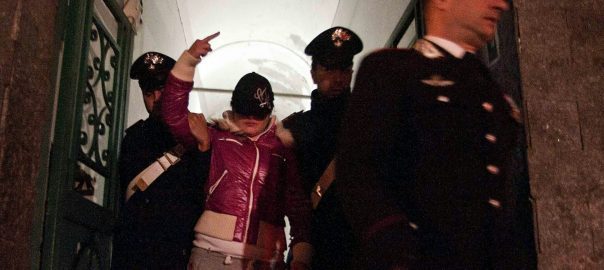Felia Allum, University of Bath
I met Caroline, a shy and pretty teenager who should be full of life and yet is not, in the course of my research. She explains to me how, as a 14-year-old, she became trapped in a cycle of violence when she transported money and drugs while being systematically sexually abused by the members of a local organised crime group.
She was threatened with attack if she spoke to anyone about her predicament. She was lured into this situation by one of her trusted girlfriends, who looked on as she was exploited.
This story highlights the complexity of women’s involvement in organised crime groups. They can be, and often are, victims. But they can also be complicit – actively involved and fully endorsing criminal values, like Caroline’s friend.
Women remain an unacknowledged component of transnational organised crime groups, which are largely thought of as macho and masculine. But we need only think of the mothers of mafia bosses in the Sicilian Cosa Nostra, the Calabrian ‘Ndrangheta and the Neapolitan Camorra to realise that women are integral to the operation of these groups.
Our lack of understanding of the role women play is unhelpful if we want to combat crime effectively. We capture glimpses of women, here and there but, on the whole, there exists a gender lacuna. Therefore, the picture we have of organised crime remains incomplete.
Over the last couple of years, there has slowly been a growing interest in this topic. And a new report from the Organization for Security and Co-operation in Europe (OSCE) seeks to bring new understanding to this issue by focusing specifically on the women who are full participants in organised crime, not as victims. I was a consulting expert on this piece of work.
Based on questionnaires, in-depth interviews and previous research, this report seeks to go beyond the traditional gender binaries and see women for what they are – people with their own agency in organised crime. They play crucial roles in the family and household, where they can also act as advisers and decision makers in their criminal organisations. They can navigate the criminal underworld as intelligently as their male counterparts.
Getting in
What becomes clear from this report is that women are recruited in different ways depending on their place in the organised crime hierarchy, which is similar to the way men enter these groups.
Women in family criminal networks such as mafias may be educated into working for the family business because that is “what you do”. Meanwhile, girls and women in the lower levels of organised crime who do not belong directly to a crime family are often recruited as mules, transporters, lookouts and dealers.
This may be because they either need the money to survive, they want to belong or are simply looking for affection. This recruitment at the lower end of the criminal hierarchy is at times connected to sexual and emotional violence and abuse.
The OSCE report underlines that the nature of women’s roles in organised crime is much more varied than is usually presumed. There is also far less difference between what men do and what women do than we previously thought.
The women in these groups will do what is necessary to survive and get on, whether this means recruiting other women for human trafficking rings, becoming street dealers or allowing their names to be used as front companies for money laundering. Women make decisions within this criminal underworld and are present across all criminal markets.
They are often the people who pass on criminal values to new generations within crime families and groups, contributing to criminal careers and cultural continuity of clans and groups. With this in mind, it starts to become clear that the foundations and roots of organised crime are, essentially, female.
Getting out
However, the report finds that women are underrepresented or completely absent from State witness protection programmes. When they are present, it is just as the wife or partner of a criminal rather than as independent participants in their own right.
For example, often, if women want to get out of the mafia, they must slot into their partner’s protection arrangements or follow a system that is set up for men. Women are not being offered the same exit opportunities as men because their specific needs as women and as mothers are rarely taken into consideration.
Women can be crucial in encouraging men to leave organised crime networks but they can also be the ones who refuse to leave the criminal underworld. This needs to be understood and taken into account.
Despite recent progress, we still need far more specific information about women as perpetrators of organised crime. Only by acknowledging their agency and listening to their experiences will we finally have a complete picture.![]()
Felia Allum, Professor of Comparative Organised Crime and Corruption, University of Bath
This article is republished from The Conversation under a Creative Commons license. Read the original article.

